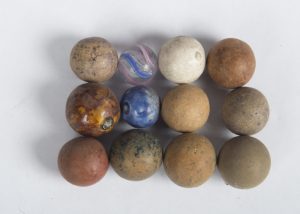The Old Medicine House is a timber-framed building that was erected in Wrinehill on the Cheshire-Staffordshire border about 450 years ago, and extended a few years later. At its heart is a mighty timber-frame back-to-back chimney with two flues, 3m (9ft 10in) square at the base and 7m (nearly 23ft) high.
The building functioned successively as a home, a tavern (the Red Lion) and latterly as a manufactory of patent medicines. When the patent medicine business ceased in the 1960s the building fell into disrepair, and became known as ‘the old medicine house’. By 1970 it was on the point of demolition. Alan and Griselda Garner stepped in to save it. With professional direction from the architect Michael Peach they oversaw the recorded disassembly of the house, removal of its components to Blackden, and rebuilding and linking with Toad Hall.
Buildings are hefted to the ground on which they stand – through memories, materials, their place in communities, ways in which they weather, the rubbish around them, local ways of doing things. Moving a building is thus undesirable. In this case, however, the choice was between transfer or loss.
An effect of the move was to reveal things that would not otherwise have been noticed. Around 200 artefacts/artefact groups were found when the house was taken apart. Among them are things that throw light on life and belief within the building at different times. Smaller items like 17th-century ceramics, glass, phials, packaging, toys, pins, and shoes give insights into changing living standards, outlooks and childhoods. Larger items such as painted plaster panels, patterns of hangings indicated by fixings, former finishes and fittings reflect Tudor, Jacobean and later taste.
More recently, examination of the timbers has revealed that many of them bear apotropaic markings. Such marks were faintly inscribed with the finest blades; perhaps for that reason until recently there has been little consideration of them, and current discussion sometimes narrows their purpose to defence against witches. We believe that marks like this were ubiquitous in the early modern period, and their distribution across an individual building (typically over openings or in corners to ward off threats) is of significance in itself.
Protection of another kind was proclaimed in the era of patent medicine. From the seventeenth century, proprietary recipes for curatives and tonics based on herbs or vegetable extracts, sometimes laced with opiates or alcohol, were marketed under the name of the originator, or other product names.
Patent remedies were the forerunners of today’s over-the-counter medicines and nutritional supplements. They have had a bad press among historians, some of whom have depicted them as manifestations of disreputable quackery. This may be because the subject has usually been approached backwards, through the eyes of modern science. In its earlier days, the patent medicines industry was widely seen as reputable. By the end of the 19th century a struggle was underway between what we would now call science-based medicine and phoney remedies. The battle is illustrated by a famous libel action in 1891 between a Crewe doctor and Samuel Johnson, founder of the business that used The Old Medicine House as a manufactory for such nostrums.
Johnson’s business archive has been gifted to the Trust. Together with object survival it is being harnessed to illuminate understanding of evolving relationships and tensions between medicine, natural remedies and pharmaceutical science. Other witnesses to that encounter were species of medicinal plants like feverfew and poppy, seeds of which germinated at Blackden after being shaken out of timber joints during the transfer.
The heritage of herbs and herbal remedies is now reflected in planting around the house.
What of the house itself? The experience of moving the house gives lessons for timber building history. For example, it took five men and an apprentice to take the building to pieces. When re-erection began in spring 1971 tools and equipment were limited to those available in the 16th century. Heavy items were lifted with no more than an A-frame and pulleys. Each step was documented day-by-day by the Garners. This produced an archive of some 5000 transparencies, 5½ hours of 16mm film (now curated by the NW Film Archive), diaries, daybooks, letters and drawings. It is an ambition of the Trust to digitise and share this record.
Records for former occupants have been researched. They promise rich heritage tangents. For instance, the house originated on the estate of Sir Ralph Egerton (1500-1579), one of whose relatives had an interest in Shakespeare’s Globe (another building that was moved from one site to another). Egerton’s own correspondence indicates that Wrinehill was a place where recusant travellers were monitored by the Elizabethan secret service.
Marbles
Children played with these marbles in and around The Old Medicine House. The glass marbles were manufactured commercially. Most of the others are of baked clay and probably made locally.

